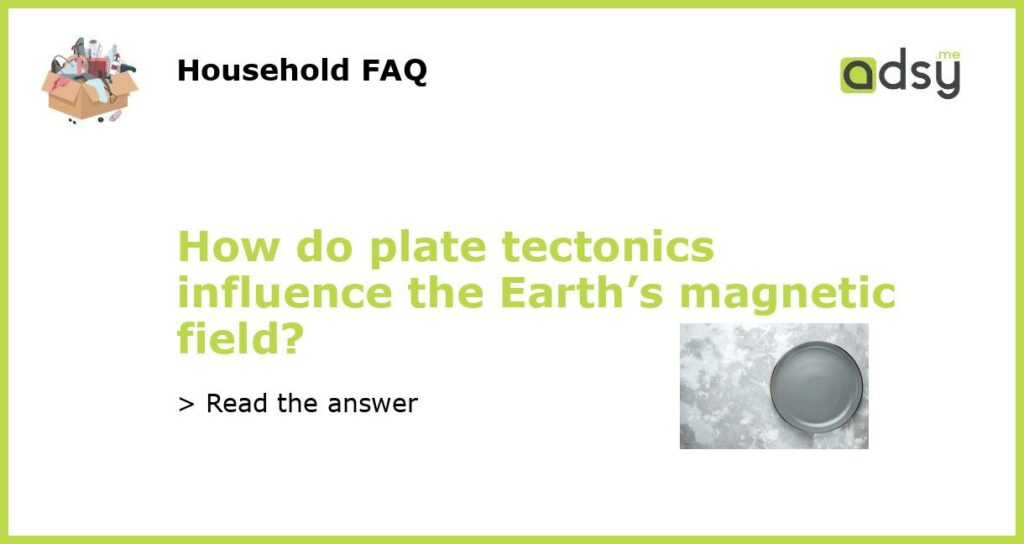The Influence of Plate Tectonics on Earth’s Magnetic Field
Plate tectonics, the theory that explains the movement and interaction of Earth’s lithospheric plates, plays a crucial role in shaping the Earth’s magnetic field. This magnetic field, along with the movement of the plates, helps scientists understand the dynamics of our planet’s interior and its geological history. In this article, we will explore how plate tectonics influences the Earth’s magnetic field.
The Connection between Plate Tectonics and Earth’s Magnetic Field
Plate tectonics and the Earth’s magnetic field are interconnected through the process of seafloor spreading. Seafloor spreading occurs at mid-ocean ridges, where new crust is being formed as two lithospheric plates move apart. As this new crust forms, it records the magnetic field of the Earth at that time. The Earth’s magnetic field experiences regular reversals, where the north and south magnetic poles switch places. This phenomenon is reflected in the magnetic stripes found on the seafloor.
2. Magnetic Reversals and Paleomagnetism
By studying these magnetic stripes, scientists can determine the timing and frequency of magnetic reversals throughout Earth’s history. This field of study is known as paleomagnetism. Paleomagnetic data has provided important evidence for the theory of plate tectonics, as the alignment of magnetic minerals in rocks on both sides of the mid-ocean ridges confirms the process of seafloor spreading.
Subduction Zones and Magnetic Anomalies
In addition to seafloor spreading, plate tectonics also influences the Earth’s magnetic field through subduction zones. Subduction occurs when one lithospheric plate is forced beneath another into the Earth’s mantle. This process creates a “magnetic barrier” between the subducting plate and the overlying plate.
When magnetic anomalies, such as variations in the intensity or direction of the Earth’s magnetic field, encounter a subduction zone, they can be recorded in the rocks of the overriding plate. This allows scientists to study the history of magnetic anomalies and correlate them with specific plate tectonic events, such as the collision of two continents or the formation of a volcanic arc.
Volcanic Activity and Magnetic Minerals
Volcanic activity associated with plate tectonics also plays a role in influencing the Earth’s magnetic field. When magma rises to the surface, it cools and solidifies, trapping minerals that align with the existing magnetic field. These magnetic minerals act as a record of the Earth’s magnetic field at the time of their formation.
By studying the magnetic properties of volcanic rocks, scientists can reconstruct the past behavior of the Earth’s magnetic field and analyze its relationship with plate tectonic processes. This information helps refine our understanding of plate tectonics and the dynamics of the Earth’s interior.
Implications for Earth’s Magnetic Field
The study of plate tectonics and its influence on the Earth’s magnetic field has significant implications for understanding our planet’s past and present. By analyzing the magnetic properties of rocks and studying the distribution of magnetic anomalies, scientists can create models that simulate the movement of lithospheric plates over time.
These models can also provide insight into the driving forces behind plate tectonics, such as convection currents in the mantle. Understanding the relationship between plate tectonics and the Earth’s magnetic field is crucial for unraveling the mysteries of our planet’s geological history and predicting future changes in the lithosphere.






